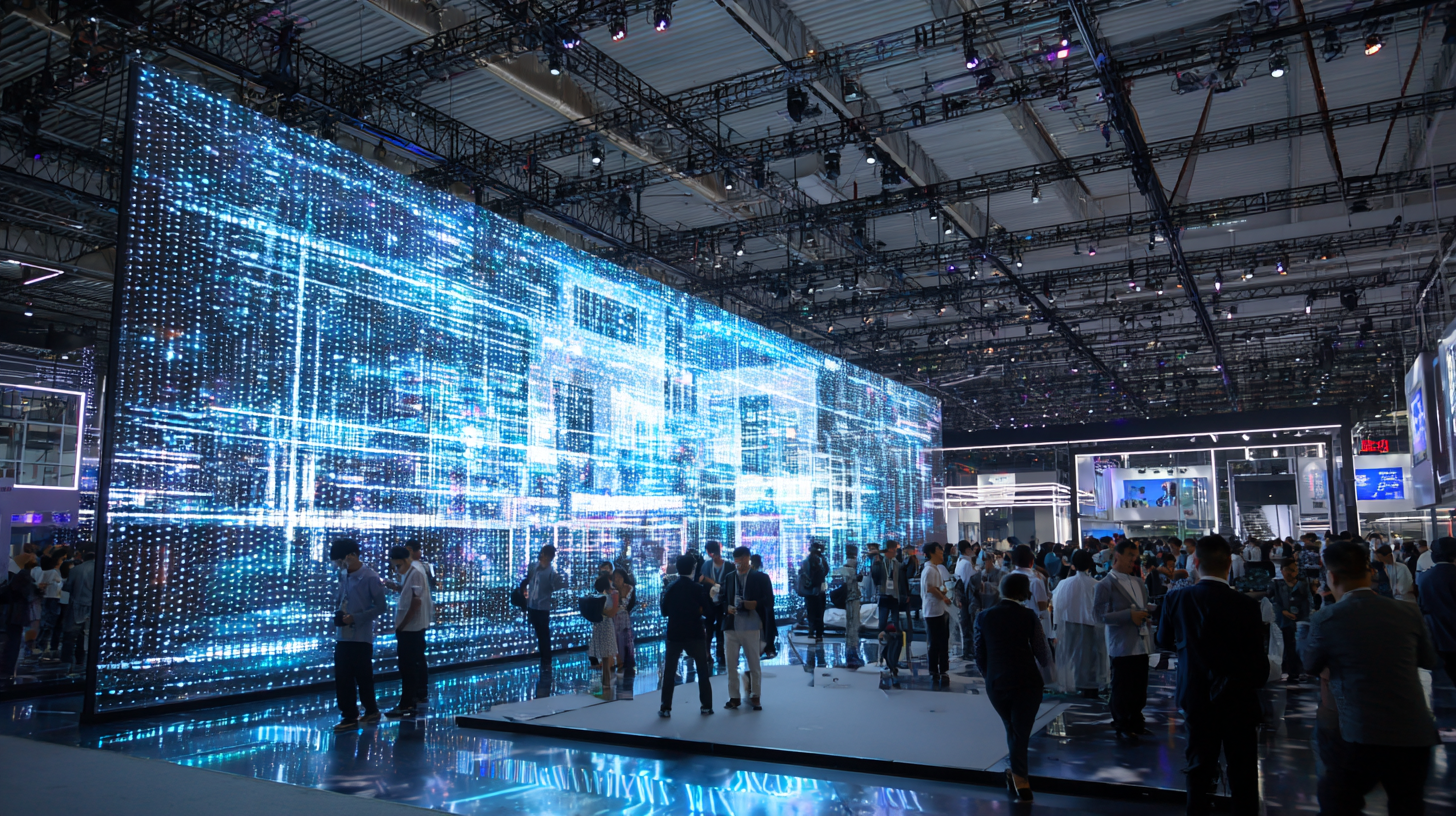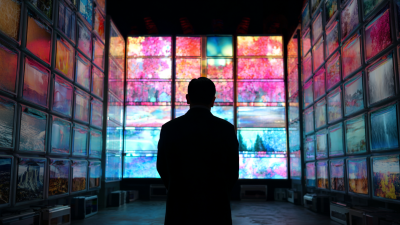



As the world continues to embrace rapid technological advancements, the electronic sign industry is poised for significant growth, particularly in the context of high-profile events like the 138th China Import and Export Fair in 2025. According to a recent industry report by MarketsandMarkets, the electronic signage market is expected to reach approximately $44.4 billion by 2025, growing at a compound annual growth rate (CAGR) of 7.7% from 2020. This expansion is driven by the increasing demand for real-time information dissemination and advertising capabilities across various sectors, including retail, tourism, and transportation. Electronic signs offer dynamic content, energy efficiency, and enhanced visibility, factors that contribute to their rising popularity among exhibitors and attendees alike at major trade shows.

At the upcoming Fair, the integration of cutting-edge electronic signs will not only elevate exhibitors' marketing strategies but also transform the overall visitor experience, setting a new benchmark for future exhibitions.
The evolution of electronic signage is set to redefine how businesses communicate with consumers in the coming years. The global digital signage market, valued at approximately $19.78 billion in 2018, is anticipated to grow to $35.94 billion by 2026, reflecting a compound annual growth rate (CAGR) of 7.8%. This growth is fueled by advancements in technology and an increasing need for effective advertising solutions across various sectors, including retail and outdoor advertising.

Additionally, major drivers such as the expansion of 5G networks and digitalization are propelling the adoption of electronic signage. For instance, the global LED display market is predicted to reach $13.77 billion by 2033, showcasing a CAGR of 4.9% from a valuation of $8.95 billion in 2024. These trends highlight the ongoing investment in visual communication technologies, making it a vital component for businesses looking to enhance customer engagement and brand visibility in the rapidly changing market landscape.
The 138th China Import and Export Fair 2025 will serve as an essential platform for showcasing these innovations, paving the way for a more dynamic and interactive signage experience.
As the 138th China Import and Export Fair approaches in 2025, the integration of smart technology into electronic signs is set to transform the landscape of trade fairs. According to a report by MarketsandMarkets, the global digital signage market is projected to grow from $21.5 billion in 2021 to $31.71 billion by 2026, reflecting a CAGR of 8.0%. This trend underscores the increasing reliance on high-tech solutions to enhance visitor engagement and optimize information dissemination at major events.
Smart technology is not only improving the aesthetic appeal of electronic signs but also enhancing functionality. For instance, the incorporation of AI-driven content management systems allows for real-time updates based on audience engagement data. Research by InfoComm International indicates that 74% of event attendees recall seeing digital signage, signifying its effectiveness in capturing attention. As exhibitors adapt to these innovations, personalized content and interactive displays are becoming integral to attracting and retaining visitor interest, marking a significant shift in how information is communicated during trade fairs.
At the 138th China Import and Export Fair in 2025, the integration of Augmented Reality (AR) and Virtual Reality (VR) into electronic signage will revolutionize how visitors engage with the exhibition. Traditional signage often conveys information passively; however, incorporating AR and VR technologies will create immersive experiences that captivate attendees. For instance, visitors could use their smartphones or AR glasses to interact with dynamic displays, allowing them to visualize products in 3D or gain real-time insights into exhibitors’ offerings.
As electronic signs evolve to embrace these technologies, the potential for enhanced visitor engagement grows exponentially. VR can transport attendees to a virtual representation of a product's environment, showcasing its functionality in context. Meanwhile, AR can overlay digital content onto the physical world, giving visitors contextual information with just a glance. This synergy not only enriches the visitor experience but also fosters deeper connections between exhibitors and their audience, making the 2025 Fair a vibrant hub for innovation and interaction.
| Dimension | Description | Potential Impact | Engagement Rate (%) |
|---|---|---|---|
| Augmented Reality (AR) | Integration of AR into electronic signs to provide interactive experiences. | Enhances visitor interaction and information retention. | 75% |
| Virtual Reality (VR) | Use of VR to create immersive experiences for visitors. | Increases visitor engagement and time spent at displays. | 80% |
| Interactive Touchscreens | Touchscreen interfaces for users to interact with digital signage. | Facilitates user-driven exploration of content. | 70% |
| Real-Time Data Integration | Display real-time data, such as event schedules, or product availability. | Provides visitors with up-to-date information. | 85% |
| Social Media Integration | Showcases live social media feeds related to the event. | Encourages visitor participation and sharing. | 65% |
The future of electronic signage is poised to revolutionize event experiences, particularly at significant gatherings like the 138th China Import and Export Fair in 2025. As technology continues to advance, innovations in electronic signage are expected to pave the way for enhanced interactivity and engagement. From dynamic displays that adjust in real-time to user preferences, to augmented reality features that enrich the attendee experience, these advancements will play a crucial role in how information is conveyed at such events.
Market growth in this sector is driven by several factors, including increasing demand for personalized experiences and the necessity for efficient communication in large-scale events. Electronic signs not only attract attention but also offer versatile solutions for event organizers to deliver messages succinctly and effectively. Transitioning away from traditional print media, the shift towards digital signage will support a more sustainable approach while allowing for immediate updates and engagement analytics that can inform future strategies. The evolution of electronic signage will undoubtedly shape the landscape of trade fairs, facilitating more immersive and impactful interactions.

As we look ahead to the 138th China Import and Export Fair in 2025, sustainability in electronic signage emerges as a critical focus for exhibitors. With an increasing emphasis on eco-friendly practices, the electronic signage industry is witnessing a shift towards more sustainable materials and technologies. According to a report by Grand View Research, the global digital signage market is projected to reach $40.1 billion by 2026, highlighting the growing demand for innovative solutions that meet environmental standards. By integrating energy-efficient LED technology and recyclable materials, exhibitors can reduce their carbon footprint and contribute positively to the overall sustainability goals of the exhibition.
Furthermore, the implementation of smart technologies in electronic signage is playing a pivotal role in enhancing sustainability. A study from Gartner indicates that incorporating IoT capabilities can lead to a 30% reduction in energy consumption for digital displays. These advancements offer not only significant cost savings but also align with the increasing consumer preference for brands committed to environmental responsibility. As the 2025 fair approaches, exhibitors who prioritize eco-friendly electronic signage solutions will not only attract attention but will also set a benchmark in sustainable practices within the industry.






